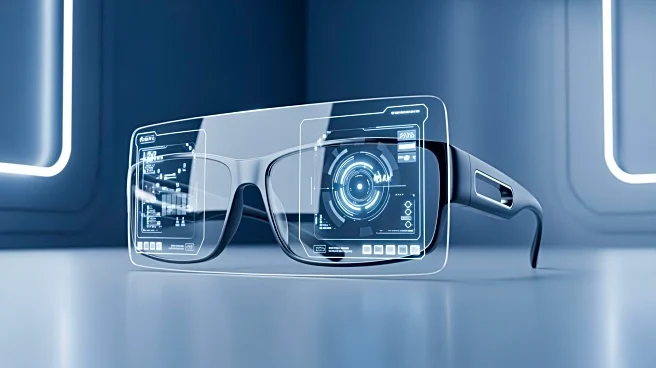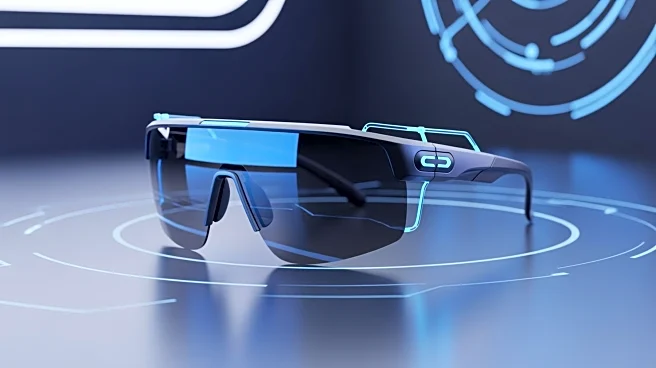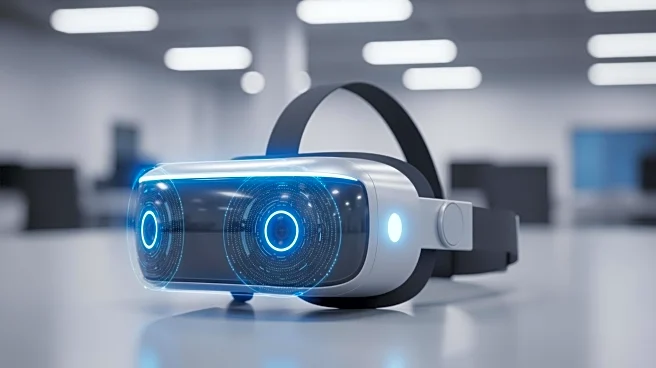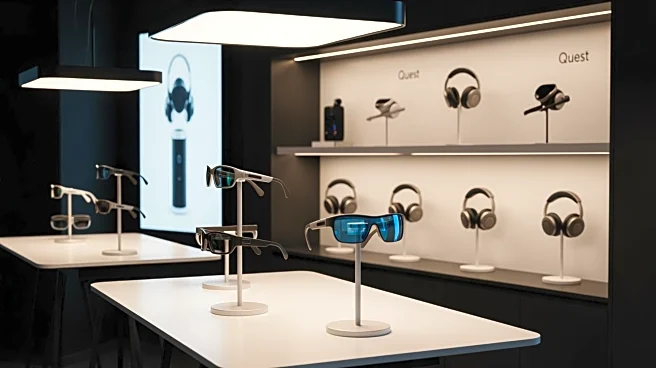What's Happening?
Even Realities has unveiled its latest product, the Even G2 smart glasses, along with the R1 smart ring, on November 12, 2025. The G2 features a display that is 75% larger than its predecessor, the G1,
and is priced at $599. The glasses are designed to be lightweight, weighing 36 grams, and are IP67 rated for durability. The R1 smart ring, priced at $249, controls the interface and tracks health metrics. The launch of these products is positioned as a move to make augmented reality (AR) more accessible to everyday users, competing with major players like Meta and Google, who are also advancing in the AR space.
Why It's Important?
The introduction of the Even G2 smart glasses at a mid-range price point could significantly impact the adoption of AR technology. By offering practical features such as translation, navigation, and meeting summaries, the G2 aims to transition AR from niche applications to everyday use. This development comes at a time when major companies are investing heavily in AR technology, indicating a potential shift in consumer behavior towards wearable tech. The competitive pricing and enhanced features of the G2 could attract casual smartphone users to explore AR, potentially expanding the market and driving innovation in the sector.
What's Next?
As the Even G2 enters the market, it is expected to be available in 350 eyewear shops, making it accessible to a wide audience. The success of the G2 could prompt developers to focus on creating lightweight interfaces and ring-based controls, enhancing user experience. Privacy concerns may arise as features like live transcription become more prevalent, sparking debates on data security. The broader adoption of AR technology could lead to increased competition among tech giants, further accelerating advancements in the field.
Beyond the Headlines
The launch of the Even G2 smart glasses highlights the growing trend of integrating technology into everyday life, potentially altering how people interact with digital content. The focus on comfort, affordability, and practical applications suggests a shift towards making AR a mainstream tool rather than a novelty. This could lead to long-term changes in consumer expectations and drive further innovation in wearable technology.











